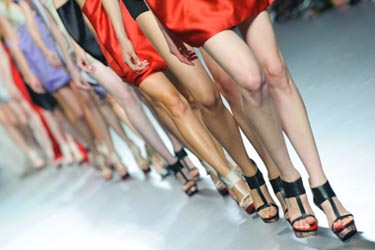Child Models in New York State Finally Get Labor Protections
The New York fashion industry, which employs 165,000 people, was until now the only industry in the state excluded from child labor protections under the Department of Labor.

New York Gov. Andrew Cuomo signed a bill Monday night that will grant child models the same labor protections as child performers.
The majority of fashion models start their careers between the ages of 13 and 16. The New York fashion industry, which employs 165,000 people, was until now the only industry in the state excluded from child labor protections under the Department of Labor.
The new law will require that young models be provided with chaperones, nurses with pediatric instruction, and tutors, and that 15 percent of their gross earnings be put into a trust.
A press conference Tuesday announcing the new law featured co-sponsors state Sens. Jeffrey Klein (D-Bronx) and Diane Savino (D-Staten Island) and Assemblyman Steve Otis (D-Rye), as well as numerous modeling industry stars, advocates, and entertainment labor professionals.
“By making this legislation the law in New York, we have brought an end to the rampant exploitation and sexual abuse of child models by giving child models the critical protections they’ve been denied for too long,” said Savino at the press conference.
“Having once been a child model myself, I know all too well that, until now, underage models have worked with very few legal protections in New York,” said supermodel Coco Rocha at the press conference.
A June report by Klein and Savino’s Independent Democratic Conference found that child models were often subject to inappropriate touching, pressure to pose nude, long unpaid work hours, and pressure to drop out of school.
“This legislation could have a powerful, far-reaching effect: In addition to safeguarding young models, it will influence the images the industry creates, which could help promote a healthier ideal of beauty,” said Sara Ziff, executive director of the Model Alliance.
As Rewire reported in July, Ziff, who herself started modeling at age 14, was a key force in educating the public and legislators about the issue.
The legislation enjoyed broad popular support and passed both houses easily.
“We were initially worried about some push-back or skepticism as to whether this was really that big of a deal in the scheme of things,” Anna Durrett, spokesperson for Klein and Savino, told Rewire. “But most times I tell people about it, their reaction is, ‘I can’t believe New York didn’t have this already!’”
